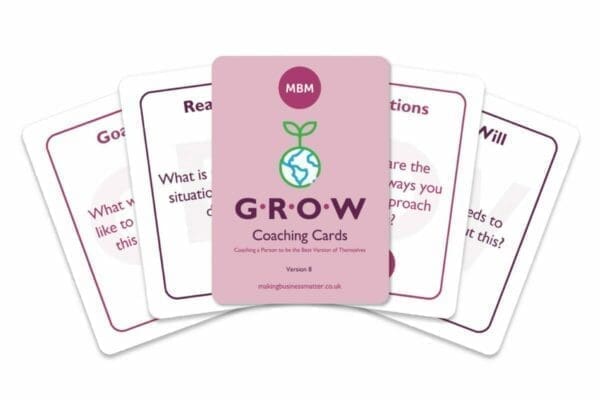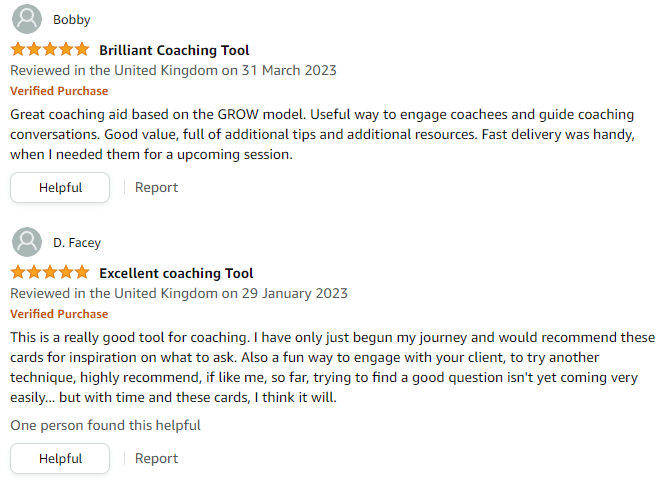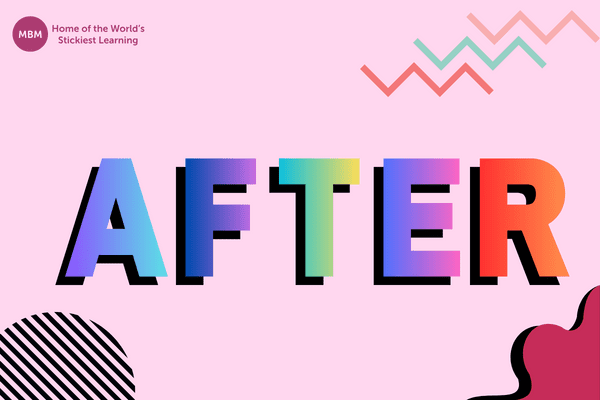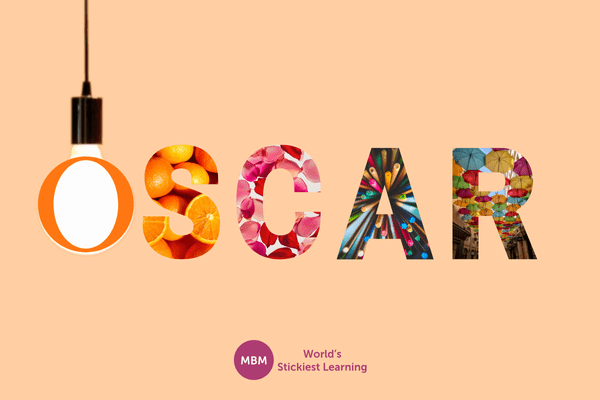Understand What Coaching is and Which Tools Work
Are you currently struggling with your coaching approach? Well, we are here to help you by looking at different coaching tools that can work for you.
Coaching is an important aspect of development and growth for any organisation. However, many companies struggle to understand what benefits can be gained from investing in coaching. Also, they become confused about what coaching approach to use to get the best results.
This article will cover a variety of aspects of this topic. First, we will look at what coaching is and why it’s important. Next, we will look at 7 effective coaching tools that companies can use to get great results. Also, we will guide you through the key steps to follow to select the coaching tools that can work best for you and your team.
What is Coaching?
Coaching is a means of achieving the company’s goals and objectives. You have a more experienced or skilled person helping others to develop their knowledge, skills and abilities in order to improve performance and achieve targets. The coach can be an internal or external person. Also, coaching can happen on a 1-1 basis or in groups.
Despite popular belief, coaching does not have to cost the company a fortune, in terms of investment of money or time. It can be done in a cost and time-effective way. Later, we will give you some important steps to follow to put these factors into action.

What are Coaching Tools?
Coaching tools are important resources that coaches use to connect with and help their participants. These are different models and techniques that are used to create a better structure for coaching sessions. These tools help guide the coaching conversations, generate effective questioning sessions, and facilitate the entire learning experience.
Here at MBM, we have a wide range of coaching cards available for 30+ different topics. These really are great coaching tools that you can use for a wide variety of coaching focus areas.


>> Grow Coaching Cards <<
When coaches want to make a positive impact, they need to have a roadmap to follow. Coaches can’t approach their sessions using improv every step of the way. Instead, they will have a variety of tools at their disposal that can help generate the outcome they are looking for. We call this the coach’s toolkit. It’s up to you, as a coach, to choose the tools that will assist you and your participants in the best possible way. Every tool has its own set of advantages and limitations. However, it’s important that we find the ones that meet our needs and get results.
Why is Coaching Important?
There are many reasons why coaching is important for companies to invest in. Here are some of the many benefits that organisations can gain from having coaching in place for their teams.
Sticky Learning ® is 7 times more effective than 1-day training courses. Plus, you will get a Chain of Evidence proving your Return on Investment. Discover soft skills training that changes behaviours long term.

1. Set Clear Goals
First, we see coaching helps to set clear and specific goals. Very often, we get lost in the day-to-day tasks. Therefore, we often lose direction or forget the bigger picture. Through coaching, we can help others have a clear direction of where they are going and what they are aiming to achieve.
2. Stay Focused
So, from the previous point, we see more focus through effective goal setting. Here, the team or individual has better clarity and can stay focused on the end results. With this, the members involved procrastinate less as they know their targets and deadlines.
3. Improve Engagement
Everyone wants to be engaged in their work. However, that is not always the case. In fact, in Gallup’s State of the Global Workplace, only 15% of employees are engaged. Engaged employees are more productive, have less absenteeism, and stay longer with the company. Therefore, engagement makes a big impact on achieving results.

Through coaching, we see greater levels of engagement. As a result, the company benefits from the investment they make in this area of improvement and development.
4. Increase Productivity
Coaching improves the skill set of those involved. Therefore, we see a more productive individual or team as a result of coaching. Every company wants a productive team. So, coaching may be the way to go to achieve that.
5. Decrease Turnover
When people receive coaching, they acknowledge this as a form of recognition from their company. As a result, they very often stay longer with the organisation as a result of that commitment that has been shown to them. I know from personal experience that I have stayed longer with companies that offer coaching opportunities rather than those that don’t.
6. Enhance Job Satisfaction
When I can do my job better, I have greater job satisfaction. It’s a simple equation. However, it makes sense. Work can be frustrating when we don’t have the knowledge or skills needed to do the job. Even worse, if the company isn’t helping us, we often look elsewhere for a company that will. However, the satisfaction level increases, especially as we see our results being achieved. The support offered by the company to develop and grow its team creates that impact.
7. Build Confidence
Finally, a huge benefit of coaching is the increased confidence we see in the participants. As people increase their skills and knowledge, their confidence in getting the results builds. Therefore, coaching plays a big role in helping to achieve this.
7 Effective Coaching Tools

There are numerous coaching tools out there. Here, we will look at 7 effective coaching tools that can really help make the difference you are looking for. We will cover:
- Pre-coaching questionnaire
- Wheel of Life
- GROW Model
- SMART Goal Setting
- Spheres of Influence
- BEER Feedback Model
- MBM Coaching Cards
#1: Pre-coaching Questionnaire
First, we need to properly understand the coaching needs of our clients. Whether you are an internal or external coach, this coaching tool helps set the tone for your roadmap to success. You probably have some idea of what the expected outcomes for the coaching are. However, this can help you better understand the needs of the specific participants.
So, how do we prepare this tool for effective use? Let’s have a look at some of the important points.
- Make the pre-coaching questionnaire tailor-made for your specific audience. This way, you will get a much better idea of where to focus your efforts.
- Also, ask open-ended questions. This allows for more detailed information for each point.
- Next, ensure each question has a clear purpose. Each question needs to give clear details of what will help the coach direct the sessions.
- Then, check that questions only appear once. Avoid repeating the same questions over again. This can deter the participant from continuing.
- Finally, be ready to probe further during sessions regarding answers that have been given.
Using these tips, you can create an effective questionnaire that can help any coach plan and prepare for upcoming coaching sessions.
Remember, not everyone likes filling out questionnaires. Not everyone understands the need for the information they are sharing. Therefore, ensure you are sharing this with those involved. As a coach, you are responsible for creating understanding and building connections early on.
#2: Wheel of Life
Next, we have a very popular coaching tool called the Wheel of Life. Basically, this is a visual tool that coaches use to create understanding for their clients about how balanced their life is at a particular time. The “wheel” is usually divided into 8 categories and the client rates each section depending on how they feel at that time.
This map can be very impactful. By viewing the results, clients can actually better understand where they need to create better balance and focus on their future goals.
I have used this tool in the past and found it to be very effective. Actually, I would recommend it to any coach. A few considerations when using this tool:
- Start with a blank wheel. Then, ask participants to fill in their top 8 priorities. This works well for groups from a mix of departments. For example, the priorities of your chief engineer may differ from your financial controller.
- Use the wheel to look at different focus areas. For example, instead of the wheel of LIFE, you can have the wheel of JOY, STRESS, or SUCCESS. It really is a versatile tool.
- Connect the wheel with future action. So, we know where we are now. However, we need to know where to go. Use the wheel to help identify these focus areas and future goals to work towards.
#3: GROW Model

A very common coaching tool is the GROW model. Created by Sir. John Whitmore and his colleagues in the late 1980s. Here, they developed an approach that is still used with continued results decades later. Every coach can use this model to help their clients.
1- GOAL:
This is where we want to end up as a result of our actions. These are the future objectives we are working towards. These can be short, or long-term goals.
2- REALITY:
Now, this step looks at where we are now. Here, we look at what the current situation is. We look at all of the variables that impact our present position.
3- OPTIONS/OBSTACLES:
Here, we look at what our different options are to move from our Reality to our Goals. We also need to look at any possible Obstacles we may face in terms of challenges along the way.
4- WRAP UP:
Finally, the different Options we have identified need to be translated into action steps. This is where we plan the steps we will take to move from our Reality to our Goals.
As a tool, this model helps look at 4 important areas that coaches can work with their clients on. However, coaches need to know how to progress through each step effectively. Let’s have a look now at GOALS in a bit more detail.
#4: SMARTER Goal Setting
Linking to the Wheel of Life and the GROW Model, coaches need to help participants achieve future goals. However, these goals need to be SMART, as well as challenging and inspiring, hence the “ER” of our SMARTER goals. As one of the coaching tools we are looking at, this links in very closely with many of the others. Let’s have a look.
1- SPECIFIC
First, ensure that the goals are specific. When goals are too general, they fail to create proper direction.
2- MEASURABLE
Use a variety of different measures for the goals you are trying to achieve. Otherwise, how will you know once you have succeeded? Therefore, depending on your goals, ensure there is a clear measure to work towards. For example, as a sales rep your measure could be the percentage increase of sales over a period of time. Or for retail, it could be a set monetary increase in sales each month.
3- ACHIEVABLE
The last thing you want to do is set your team or individual up to fail. Therefore, any goal you set needs to be achievable. Otherwise, you will demotivate the participants from the start. Set your goals in such a way that people can be successful. However, let’s not make them too easy either.
4- REALISTIC
So, for goals to be achievable, they need to be realistic. Yes, you set a measurable goal that can be achieved. However, you may mess that up by setting unrealistic time frames. There needs to be proper balance throughout the entire goal.
5- TIME-BOUND
We just mentioned time frames need to be realistic. Every goal that is set needs to have an end date. Be fair when considering the time-bound element of your goals. The last thing you need is burnout in your team as a result of unrealistic time frames that are set.
6- ENERGISING
Challenges energise us. We all work better when we have energy and enthusiasm for what we are doing. When a goal is too easy to achieve, it doesn’t test us. Instead, what we want are goals that will use a variety of our knowledge and skills, ones that will test us.
7- REWARDING
Finally, we want goals that inspire us. Therefore, we want to have personal or company rewards linked to the goals we are trying to achieve. These do not have to be monetary goals. In fact, have a variety of different options available that will reward and recognise the team or individual once the goals are achieved.
So, there you have it. SMARTER goals help create focus and direction. Very often, coaches help us not only prepare our goals and map them, but also to understand how we can best achieve them.
#5: Spheres of Influence

Many participants in coaching programmes make one big assumption: the coach is here to fix everything for me to make things better/easier. Obviously, this is not the case. Coaching is about preparing the participants to make the changes they need themselves to achieve their results. Another false assumption is that coaching will fix all of the internal and external issues they are facing. Again, this isn’t the purpose of coaching. And this is where our next coaching tool helps create better focus and understanding.
The Sphere of Influence is an effective tool to help participants understand what they can and cannot control. The format is simple enough to use. It is used to identify what the participants have the most control over. We use a variety of questions to make the participants really think about what they can control and how that might impact their chances of moving forward.
The tool is made up of 3 key spheres:
What I Can Control
In this inner circle, we add in all areas that we have direct and complete control. For example, you might add the weekly schedule for your team or the submission of a report you are responsible for. There will be a number of tasks and areas that fit into this section. We only include what we have FULL control over, without having to refer to others for suggestions or approval.
This section can be very refreshing to review. It reminds us of the key areas of responsibility we have and motivates us to focus more on these areas to ensure they are well-managed and executed.
What I Can Influence
Next, we move to the mid-circle and add everything that we influence. This includes certain tasks and decision-making that are done with your input. However, these are not completely in our control. Instead, we add value through our contribution. Some examples can include your departmental budget, interdepartmental projects and other areas where you and others make the decisions and contribute.
This section shows us how we rely on others for the final outcome we are looking for. Completing this activity helped me identify where I can work harder on building relationships and collaboration to achieve results. It was very useful to know where I can have an impact even without always having the final say.
Everything Else
This outer section can be the most challenging and frustrating to deal with. And, many participants believe that coaching needs to fix everything here as well. In this section, the majority of aspects that impact our lives fit here. It’s also the section that can cause us the most stress due to the lack of control or influence we have here. In reality, we spend a lot of our time and effort here, even when we know that we cannot really change it. For example, here we have the weather. You have a plan for an outdoor activity to push sales of your product. However, you cannot control or influence the weather.
It is important that participants can identify what fits into each sphere. Also, they need to use this tool to help identify how they can create better balance and focus by working on what they can control and influence and spending less time on everything else. I have personally found this to be a very useful and productive tool, for both coaches and participants.
#6: BEER Feedback Model
There are various different feedback models out there for coaches to use. I have chosen to share the BEER feedback model due to having used it in the past and seeing the results it produces. Feedback between coaches and their participants is very important to cover effectively. Also, coaching others in their own feedback skills is a skill set that every leader should know. Let’s have a look at the BEER feedback model.
1- BEHAVIOUR
First, we explain the behaviour we have observed. At this stage, you are setting the scene for the rest of the conversation. Remember, you want an open, 2-way stream of communication throughout this process. So, ensure you set the right tone from the start.
For example, you witness your participant speaking rudely to a member of the team when giving instructions for a task. Here, you would explain exactly what you saw and heard.
2- EFFECT
Next, we need to explain the impact or effect this behaviour has had. This is the effect it had on the individual, others who witnessed the scene, the operations, etc. Be sure to explain all aspects that have been impacted.
3- EXPECTATION
Now, we need to cover what our expectations are moving forward in terms of changes in behaviour we expect to see. Be clear about what changes are needed. Also, show support and share your own experiences of similar behaviour. In that way, the participant fully understands the next steps that need to be taken.
4- RESULT
Finally, share the results they can expect from the required action. Give examples of the positive outcomes they can look forward to through the action they will take.
#7: MBM Coaching Cards

This topic about coaching tools would not be complete without sharing the coaching tool that is available through our website. Here, we have 30+ sets of coaching cards that are available for sale. We have worked hard to create these coaching cards using the knowledge and expertise of our amazing team and contributors. We created these decks to complement the coaching technique of questioning to have the participants think for themselves and analyse different topics.
One difficulty that some coaches have is designing their questions in such a way that participants, well, participate. Sometimes, the questions are overly complicated. Often, the questions create more confusion than conversation. These cards are your solution to those barriers.
The cards are designed in such a way that you can use a different one each day to get conversations happening around the assigned topic. For example, in our deck or the GROW Model, one card will explain the 4 aspects of GROW while other cards get the participants thinking about the more detailed aspects of the model and how they can apply it best.
These coaching cards really do work. They are easy to use, are suitable for any level of leadership or staff, and cover many topics. Have a look at our selection and I am positive that there will be something there for you.
Which Coaching Tools are Best?

We have shared a variety of coaching tools with you. But, which is the best? Well, that really depends on what you want to achieve. However, there are 5 basic considerations you need to keep in mind when selecting the right coaching tool for your needs. Really, you need to think about AFTER to get the right coaching tools for you.
1- Assess the Coaching Needs
Before you even consider coaching, assess what the needs are. You need to understand what goals you are trying to achieve. Also, know who will participate. Analyse the personalities and styles of the participants. This will help you decide on the most effective tools to use.
2- Find the Right Coach
Next, consider who will be the coach. This can make or break the experience. Be sure you have made the right choice. Choose carefully between internal and external coaches.
3- Test and Try Different Tools
Don’t be afraid to give different tools a try. Test them to see how they work. You will feel more confident with the different tools the more you use them. Also, your participants will enjoy having a mix of styles during the coaching to keep it varied.
4- Evaluate the Results
Next, check the results. See how the different tools have made an impact. Get feedback from the participants as well as their leaders. This is a great way to understand what is working.
5- Refine/Realign the Techniques
Then, realign the delivery where needed. Maybe one of the tools didn’t get the expected results. Then, refine the delivery or approach with the same tool. Or, move on to a different one.
Using these steps, you will have a better chance of finding the right balance between the different tools to get the results you are aiming for.
We also have content on Medium. Make sure to support us there too!




